Going to try and learn some of this black magic of procedural shading like Simon Thommes.
The first problem I encountered was, being used to working with colors, that black is no longer always 0.
Now you're working with values, so black can be negative, meaning that multiplying black with black can result in white (or grey, or black)!
It's not really a problem, but something to be aware of...
First challenge: a screw. Far from perfect, but it's working:
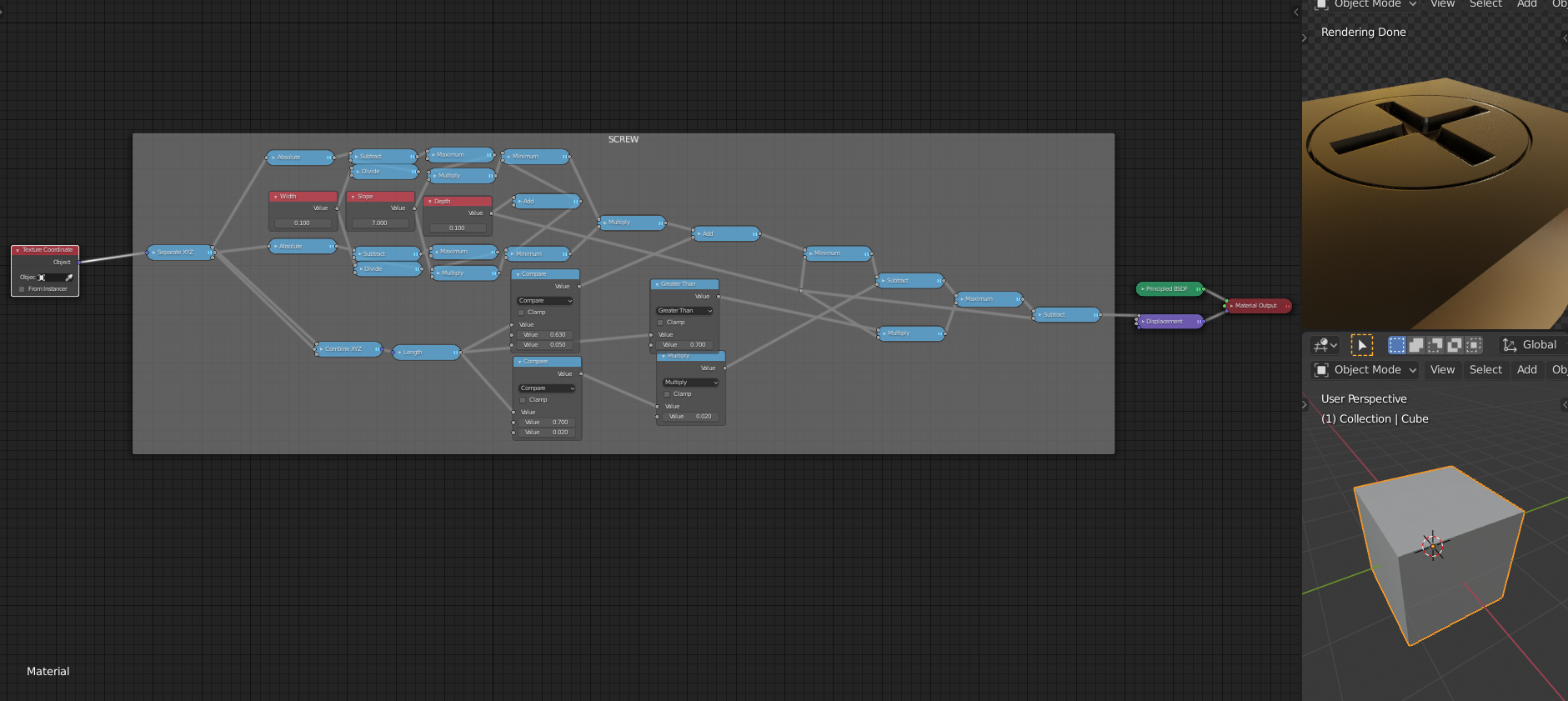
Actually took me a lot longer than expected, but I am feeling more confident now;)
That looks pretty cool Spikey 😎 looking forward to seeing more of the black magic!
Dang man! Looking good, I want to see what else you can come up with.
As always ![]() spikeyxxx you are an inspiration. I got lost in that video trying to follow along. Wished it was just 1 screen showing what he was doing. Thank you for posting a picture of your shader though, that seems to help a little with the workflow.
spikeyxxx you are an inspiration. I got lost in that video trying to follow along. Wished it was just 1 screen showing what he was doing. Thank you for posting a picture of your shader though, that seems to help a little with the workflow.
This is going to be a long learning path.
So much is so complicated to wrap your head around.
Just playing with the White Noise Texture as a random number generator:
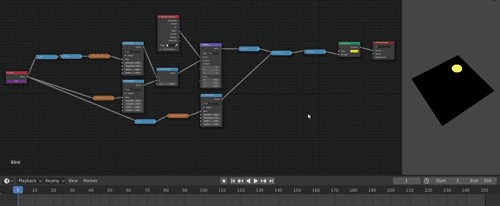
Faking holes:
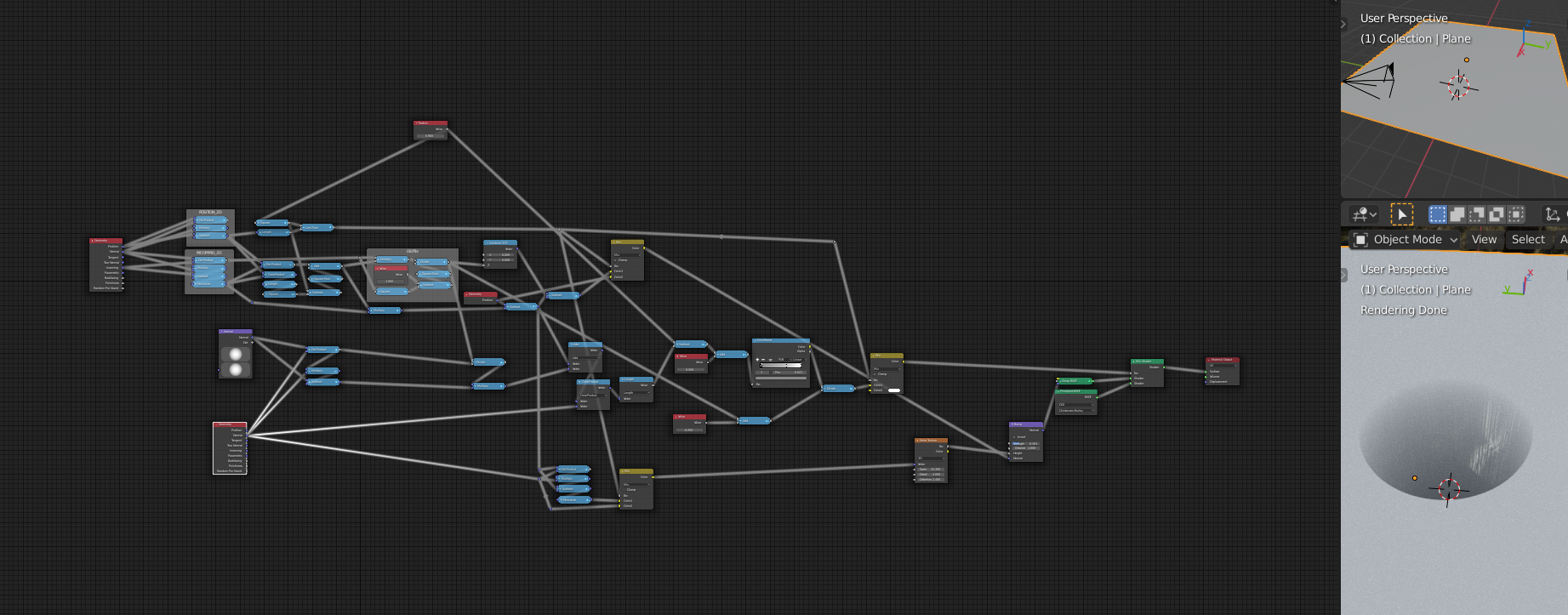
No displacement, just a plane with 4 verts.
I realize that showing the node tree isn't very useful, I will probably refrain from that from now on, you'll just have to trust me that everything you'll see here is procedural;)
Hans Chiu made a 'tutorial' on how to do this. I more or less begin to understand how this works.
It made me think of something I have seen people do a few times, saying that they have no idea what they were doing but they saw someone do it and it worked...
Presenting it like it is way too complicated to understand for non-mathematicians...
Here it is: they dot-producted a vector with itself. That is not higher math. that is just good ol' Pythagoras;)
In nodes (these four are all the same):
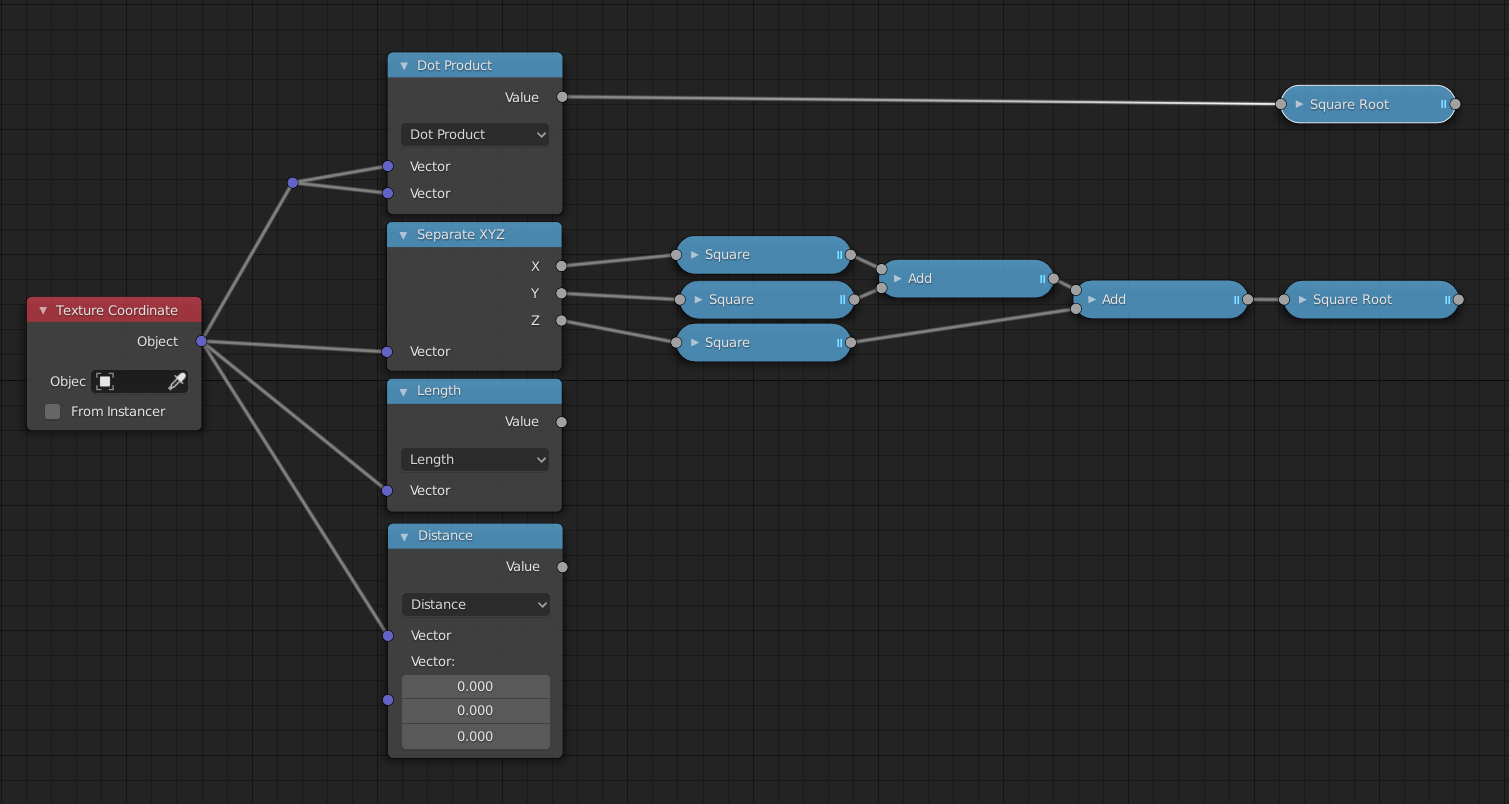
Finally managed to 'cube the sphere'!
This took me forever to figure out how to do. Using Ray Marching and Vector Displacement.
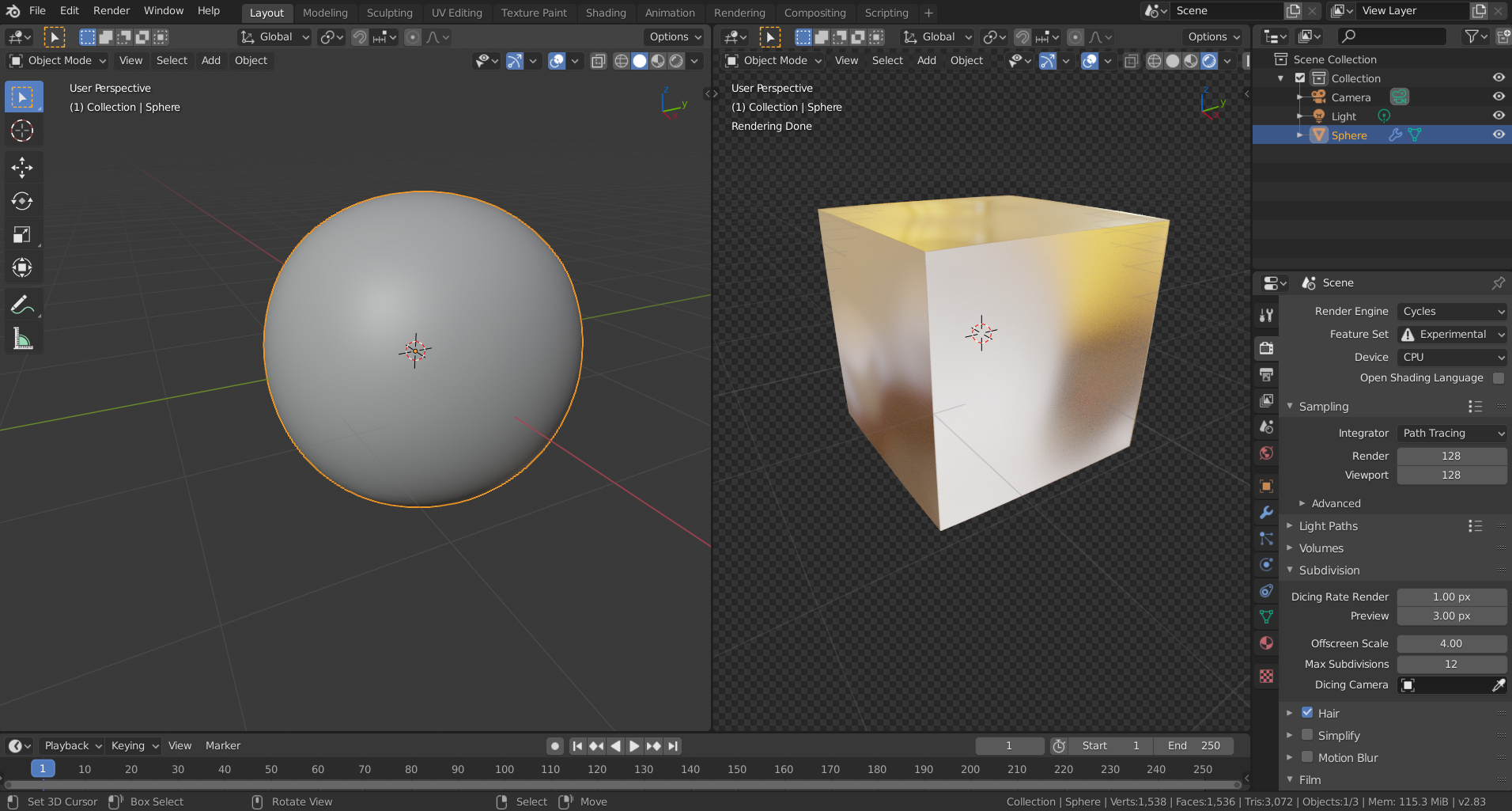
Now I feel rather proud;)
Decided to give Nodevember a try, at least one day :)
Not the best result, but for less than 6 hours...(most are problems that only became apparent when rendered...):
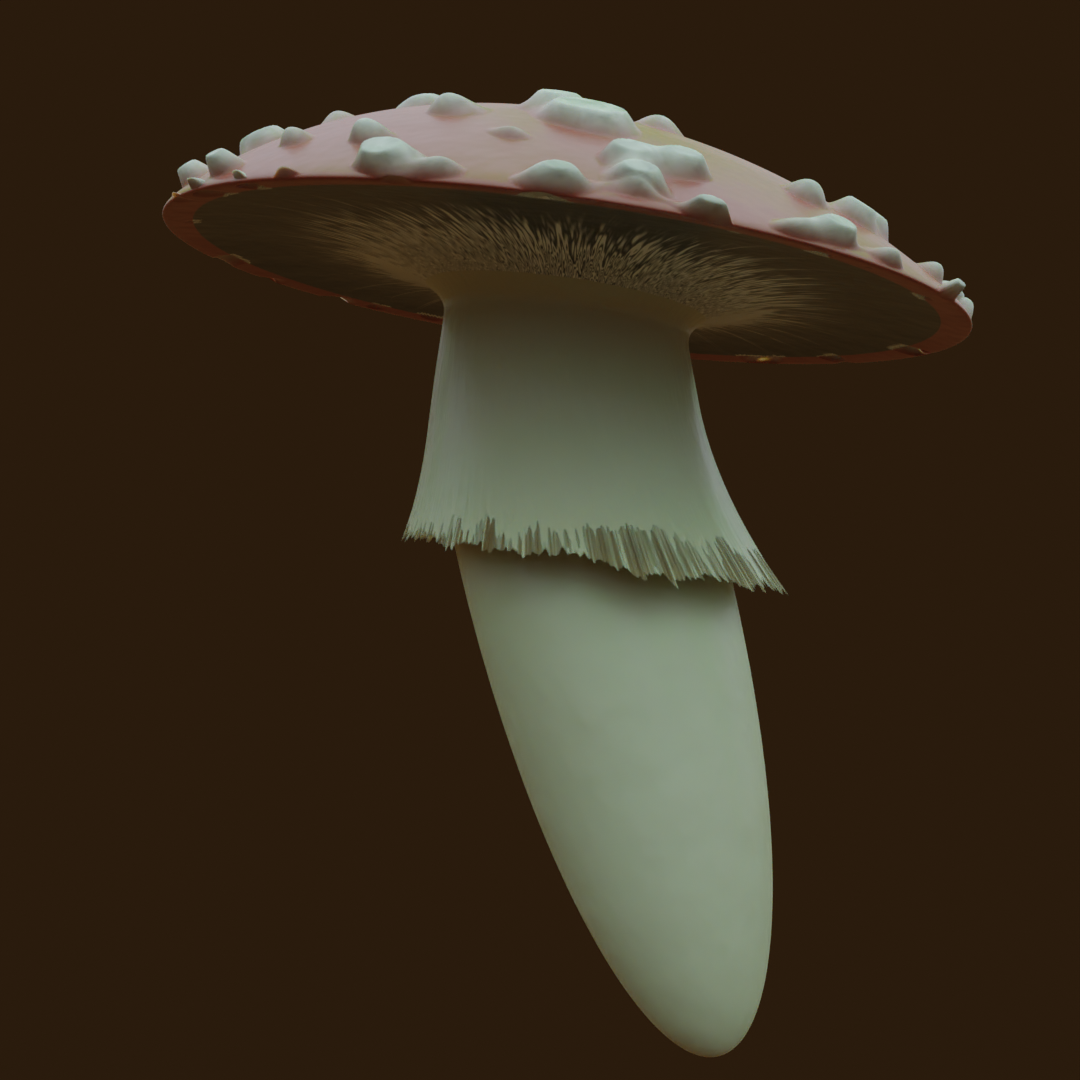
Made from a Cube:
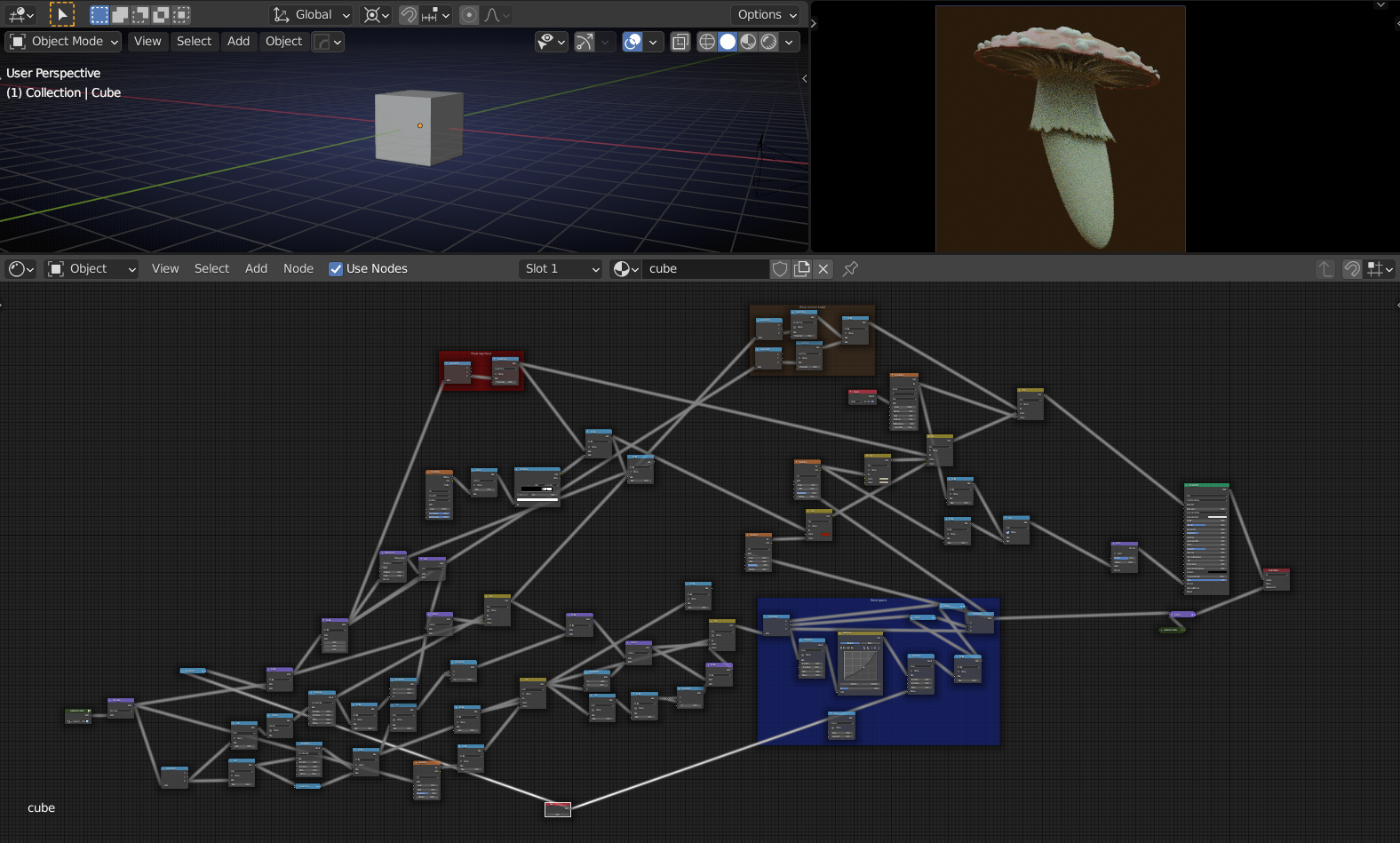
I know...the nodes are a complete mess ;)
Btw. : the lighting is also procedural.
Nodevember scares me still lol. I like to call it No-vember so I am impressed with how much you got out of the cube! Definitely looks like a mushroom.